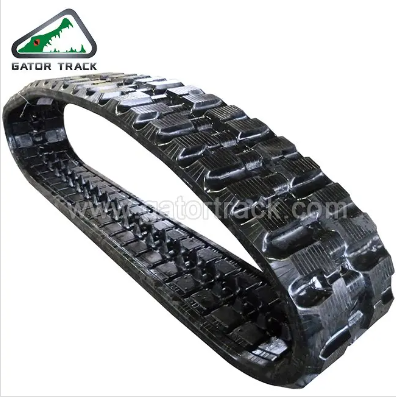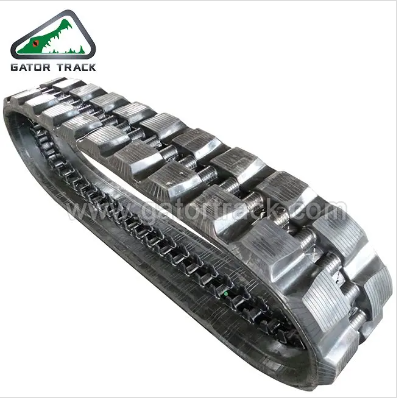Background:
The construction industry relies heavily on heavy machinery to perform a variety of tasks efficiently. Track loader rubber tracks play a vital role in this sector, providing traction, stability and maneuverability to loaders such as skid steers and compact track loaders. These rubber tracks are vital in ensuring the smooth operation of construction machinery, especially in challenging terrain and harsh weather conditions.
Market demand analysis:
In recent years, driven by the expansion of the construction industry and the continuous adoption of advanced construction equipment, the market demand for loader tracks has continued to rise. The global market size of loader tracks is expected to grow significantly, with a CAGR of over 5% during the forecast period. The main demanders for loader tracks are construction companies, rental agencies and equipment dealers who require these compact track loader tracks to increase the performance and versatility of their loaders.
Loader track applications are diverse and cover a variety of construction activities such as excavation, material handling, grading and landscaping. These tracks are designed to withstand heavy loads and provide excellent traction, making them an integral part of construction projects in urban areas, remote locations and rough terrain. Furthermore, as construction activities continue to expand across the globe, the growing trends in infrastructure development and urbanization are further driving the demand for loader tracks.


Application:
- Residential complex construction: In large-scale construction projects in residential complexes, the use of crawler loader rubber tracks has been proven to help ensure efficient material handling and earthmoving operations. Loader tracks enable machines to traverse construction sites with ease, even in muddy and uneven terrain, speeding up project schedules and reducing operational downtime.
- Road construction project: A road construction company uses Bobcat loader tracks to improve the performance of its skid steer loaders during highway construction. The tracks provide superior stability and traction, allowing the loader to operate seamlessly on a variety of surfaces, including gravel, asphalt and soil. This increases productivity and cost-effectiveness as the machine can efficiently perform tasks such as grading, trenching and paving.
In summary, the market demand for loader tracks in the construction machinery sector is driven by the need for enhanced equipment performance, increased efficiency and versatility in various construction applications. As the construction industry continues to expand, the demand for high-quality loader tracks is expected to grow, providing manufacturers and suppliers with the opportunity to meet the changing needs of construction companies and equipment users.